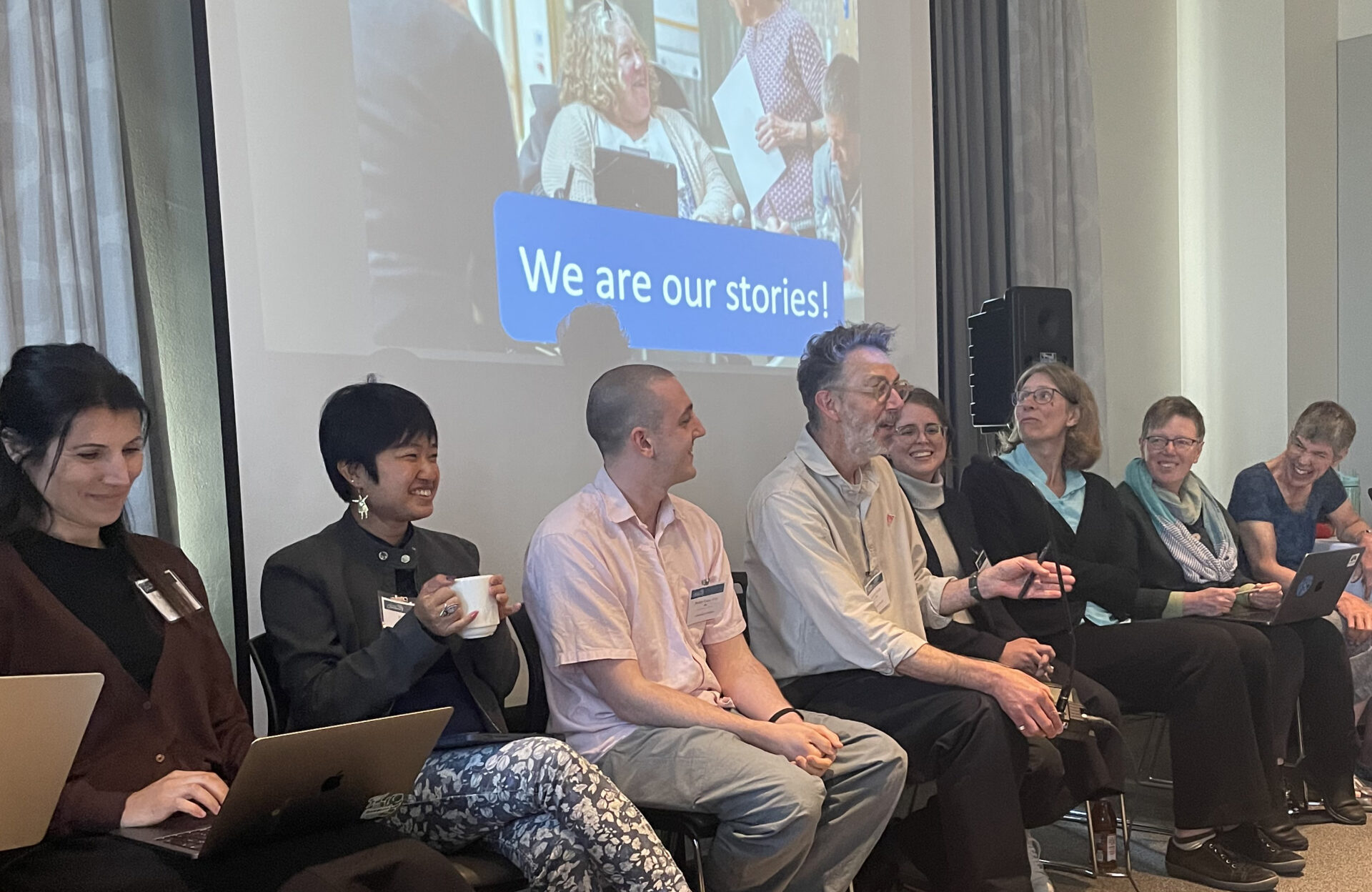Project Converse workshop, Buffalo NY, 31 May – 2 June 2023
by Graham Pullin and Fin Tams-Gray
Graham Pullin and Fin Tams-Gray participated in an interdisciplinary workshop in Buffalo, NY, organised as part of ‘Project Converse’: a research project exploring AAC (augmentative and alternative communication) from a conversational perspective. The event was hosted by Jeffery Higginbotham from University of Buffalo, one of our Advisory Panel on itDf. The invited mix of conversational analysists, speech and language therapists, people with complex communication needs, designers and speech technologists shared and discussed their complementary perspectives on AAC. A key theme was ‘enchrony: in which multimodal interactions that happen in a conversation can be studied within a timeframe of seconds or even fractions of a second – in parallel with the words themselves that might be exchanged.
Graham led a Design Panel, exploring with ten of the delegates how design might contribute to AAC. What ‘design’ meant depended on the panellists, who included: Seray Ibrahim (Kings College London), Annalu Waller (University of Dundee), Jutta Treviranus (OCAD, Toronto), Éva Székely (KTH Royal Institute of Technology, Stockholm), Stephanie Valencia (Carnegie Mellon University, Pittsburgh), Rachel Chen (Nanyang Technological University, Singapore), Yoosun Chung (George Mason University, Virginia), Antonia Krummheuer (Aalborg University), Fin Tams-Gray (DJCAD, Dundee).
To start the session off, the panelists were invited to each display a single image and a 50 word statement. Diverse responses included:
“Assistive technology design focusses on the AAC user. The unfamiliar listener requires support and social scaffolding as well. Meaning and the rhythm and flow of conversation are shaped and negotiated collectively. Unfamiliar listeners must adapt to the meaning making, rhythm and timing of the AAC user. AAC strategies should assist in this.”
Jutta Treviranus
“Having agency as a design goal can serve us to generate accessible communication experiences and center users’ perspectives in the design process of new technology. Through the process of making “things”, we can uncover design knowledge on how specific technology materials (modalities, platforms, and mediums) support or hinder conversational agency.”
Stephanie Valencia
“Designed AAC devices and tools should allow (if not encourage) exploration, experimentation and hacking. The agency and autonomy of the individual should dictate the nature of how we interact with these tools, and create opportunities for augmented communicators to engage in nuanced and non-normative interactions.”
Fin Tams-Gray
A lively discussion followed, with the audience as well as one another.
The workshop also included a Tech Demo on the second day, an opportunity for attendees to share technology prototypes they had been working on to gather feedback and insights from the other delegates. Demos ranged from conversational chatbots to augmented reality. Fin and Graham used the opportunity to show videos of two objects we are currently making in order to support new conversations about AAC. These we felt communicated not only the ethos and spirit of our itDf approach to design and AAC, but also why we believe that design sensibilities could be instrumental to exploring future communication objects together.

